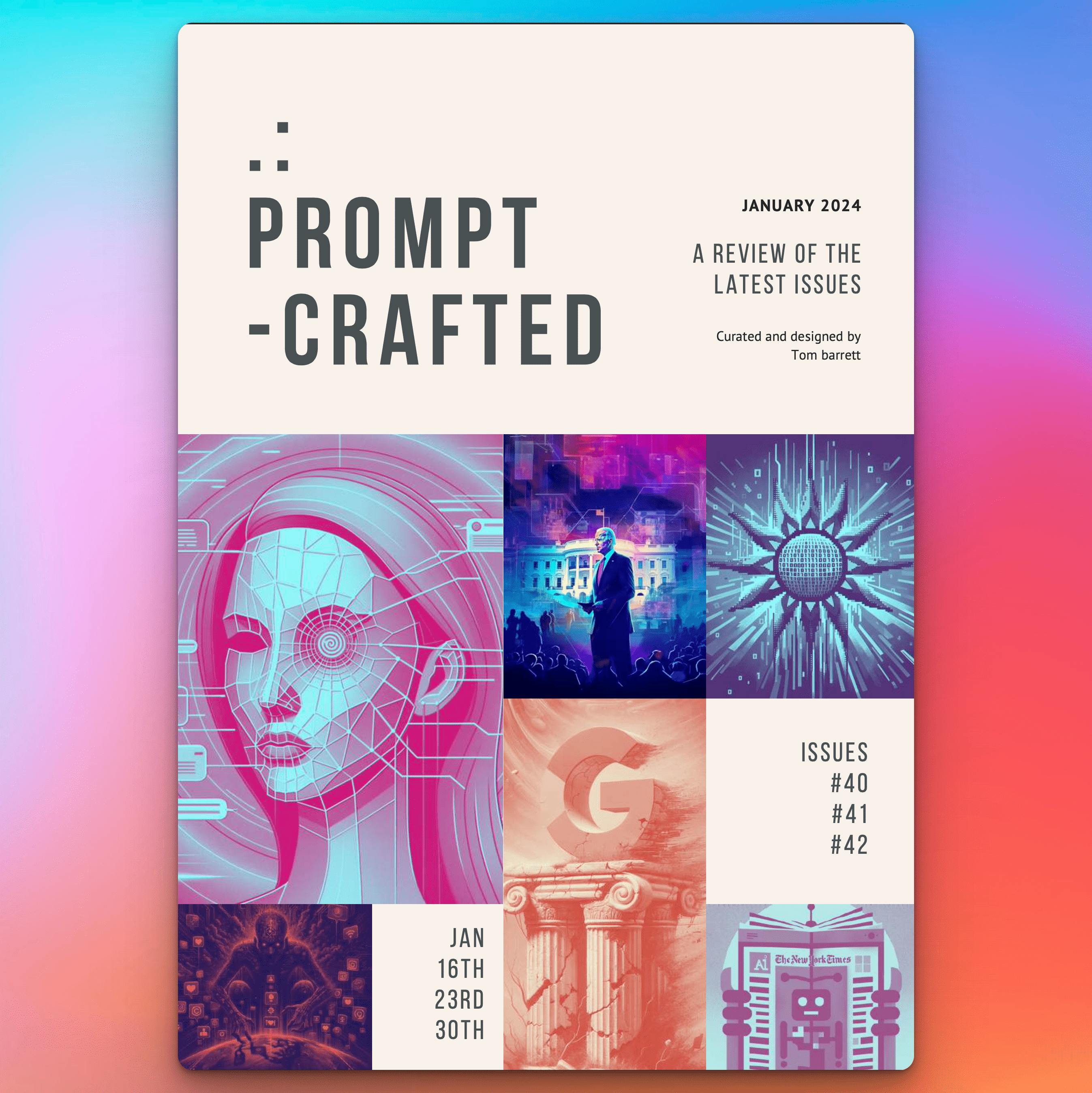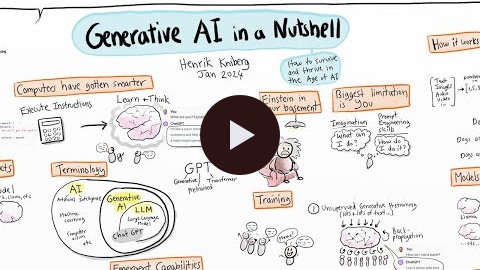|
Hello Reader,
Promptcraft is a weekly AI-focused newsletter for education, improving AI literacy and enhancing the learning ecosystem.
In this issue, you’ll discover:
- More schools in Australia to trial AI tool for students;
- OpenAI joins Meta in labeling AI generated images;
- What can the EU learn from Asia about AI regulations?
Let’s get started!
~ Tom Barrett

K-12 TRIAL
.: NSW schools in Australia trial AI tool for students
Summary ➜ The NSW Department of Education in Australia has developed a new generative artificial intelligence (AI) app called NSWEduChat, designed for education and safe for school-aged children. The app will be trialled in 16 NSW public schools over the first two terms of 2024, with teachers deciding how to use it in their classrooms. The app only responds to students’ questions about school activities and education-related topics and has embedded safeguards to monitor and remove inappropriate content. The trial will be monitored and reviewed to inform the future direction of AI in NSW public schools.
Why this matters for education ➜ This news from Australia is the second trial led by a public education system after South Australia bucked the banning trend last year. I am curious if there are global precedents.
Do you know of any other K-12 education system running similar trials of state-designed chatbots?
It reminds me of the walled garden days when YouTube emerged as a ‘threat’ to education systems as a young primary teacher in England. Tom, the techno-idealist, still wonders about the chasm between walled-garden edu-versions of AI systems and the full capabilities of frontier models.
|

AI LABELS
.: OpenAI joins Meta in labeling AI generated images
Summary ➜ OpenAI has announced that it is updating its app ChatGPT and its AI image generator model, DALL-E 3, to include metadata tagging identifying images created with AI tools. This move comes shortly after Meta announced a similar measure for labelling AI-generated images across its platforms.
Why this matters for education ➜ A good start regarding better labelling and transparency by design. Fast forward a few years and I can see we will have better tools and encoded standards for displaying augmentation. Although it is not a silver bullet, I wonder what auto-labelling might look like for text. A key attribute this development does not change is the opacity of the training data of proprietary models, which is still as shrouded as ever.
|
|

POLICY
.: What can the EU learn from Asia about AI regulations?
Summary ➜ ASEAN has published voluntary and light-touch guidelines for using AI. The ten ASEAN members agreed to the guidelines, which could cause upset within the European Union (EU) as it has been lobbying for other parts of the world to align with its own stricter proposed framework, the AI
Why this matters for education ➜ It is interesting to see how different regions publish different guidance frameworks. This is relevant in education because careers in technology may look very different depending on where you are in the world as AI regulation takes hold. It is also worth paying attention to the alignment of educational guidelines to wider industry policy regarding AI. For example, access to some AI models has been slow or limited in the EU due to restrictions. Not a global level playing field.
|
:. .:
Early Bird Discount
.: The humAIn Community is Open!
Take a look at my online community to explore, connect and learn about AI for education, before the price goes up in 6 days.
You will be joining fellow educators from Singapore, US, Australia, Spain and the UK.
Find out more and grab the early bird membership offer before it is gone.
|
Monthly Review
.: All the January issues in one convenient PDF
 |
Promptcrafted January 2024
Discover the future of learning with Promptcrafted – Tom Barrett’s monthly guide to AI developments impacting education…. Read more
|
|
.: :.
What’s on my mind?
.: The Ghost of Politics Past: AI’s Unsettling Role in Indonesian Elections
While I was working on today’s newsletter, I came across reports that there has been widespread use of AI deepfakes in election campaigning in Indonesia.
This news might not be new to some, as we have seen similar issues before in the US. However, this story takes the idea of an election deepfake to a whole new level.
Indonesia is in the midst of an election cycle, and with a population of over 278 million, one of the largest democracies globally, people are being bombarded with deepfake videos and images. It is worth noting that Indonesia has the fourth-largest education system in the world.
The scale and extent of this misuse of AI technology in such a populous country are unprecedented and unsettling. It’s a stark reminder of the urgent need for AI literacy and the ability to discern between real and synthetic content in our digital age.
According to the reports, one political party has generated a deepfake message from a previous president, Suharto, who passed away in 2009.
“I am Suharto, the second president of Indonesia,” the former general says in a three-minute video that has racked up more than 4.7 million views on X and spread to TikTok, Facebook and YouTube.
This incident underlines the pressing need for comprehensive regulations and public education about the potential misuse of AI technologies.
This issue got me thinking about deepfakes for political gain, the nuances of ethical use and where the line of taste is drawn.
If this example sits on one end of a disturbing scale, where would you place the chatbot prompt: “Act as Grace Hopper and help me with my innovation strategy…”?
Are they not the same invocation of a deceased leader in society, just executed to varying levels of fidelity, with different intent?
In an era where digital resurrection is possible, where do we draw the line between honouring a legacy and exploiting a memory?
:. .:
~ Tom
|
Prompts
.: Refine your promptcraft
Do you have a great prompt you would like me to share in a future Promptcraft issue? Drop me a message by replying to this email.
Today I want to share a good example of structured prompting from Jessica Parker who uses the powerful trio: Role, Context, Output.
Please explore her post on LinkedIn about the prompt and upcoming webinars.
The only changes I have made are to add parentheses to any possible variables you could adapt to your context.
Search Strategy Prompt
Role and Purpose
You are a [research librarian] who is an expert at [developing search strategies for literature reviews]. Your purpose is to help me develop a []comprehensive search strategy].
Context
I am a [doctoral student researcher] conducting a study on [higher education faculty and their acceptance of Al-driven assessment methods].
Instructions
I will provide the research question guiding my study. You will then provide guidance and help me develop a [comprehensive literature search strategy by identifying key concepts and terms, databases relevant to my field of study, search strings, and filters].
Output
Always structure your responses using markdown.
- Identify key concepts and terms and consider synonyms, acronyms, and variations in spelling or terminology.
- Identify databases that are most relevant to my field.
- Suggest search strings, including Boolean operators and truncation.
- Suggest filters for me to use in various databases to refine my search.
Remember to make this your own, try different language models and evaluate the completions.
Also, I have found that it doesn’t matter too much if you drop the sub-headings from the prompt. But different tools will give you different results.
|
Learning
.: Boost your AI Literacy
INTRO COURSE
.: Generative AI in a Nutshell – how to survive and thrive in the age of AI
Basically a full day AI course crammed into 18 mins of drawing and talking. Target audience: everyone.

REFERENCE
.: AI Ethics Living Dictionary
The Montreal AI Ethics Institute created the AI Ethics Living Dictionary to make AI ethics more accessible.
The dictionary contains plain language definitions of technical computer science and social science terms related to AI ethics.
The Living Dictionary aims to inspire and empower readers to engage more deeply in AI ethics and contribute to developing ethical, safe, and inclusive AI.
FUTURE WORKFORCE
.: Generative Artificial Intelligence and the Workforce
A useful new report on the impact of GenAI on the workforce from The Burning Glass Institute in the US.
GenAI will touch a broad array of roles. In many cases, however, the impact will be less about automating away tasks than about augmenting workers’ productivity and effectiveness or transforming the definition of job roles altogether
|
Ethics
.: Provocations for Balance
Why is it disrespectful and unethical to invoke the thoughts, voice or words of a person who is deceased?
Can you think of a scenario where this would be acceptable? Is it OK if the intention is benevolent? What about without consent?
When AI can convincingly replicate the voices and opinions of past leaders, how might this power reshape our understanding of history and truth?
Is there a difference in invoking the persona of a long-deceased historical figure for educational or entertainment purposes versus someone who has recently passed away?
Inspired by some of the ideas raised by my reflection on deepfakes and digital resurrection.
|
:. .:
.: :.
Questions, comments or suggestions for future topics? Please reply to this email or contact me at tom@dialogiclearning.com
The more we invest in our understanding of AI, the more powerful and effective our education ecosystem becomes. Thanks for being part of our growing community!
|
